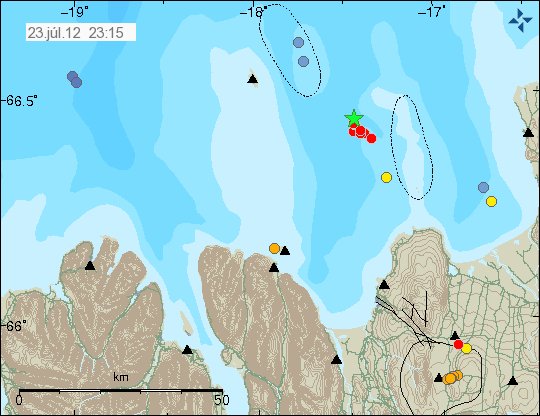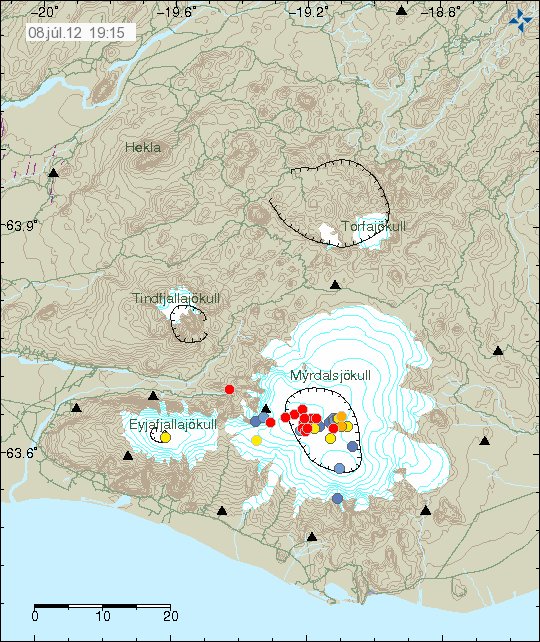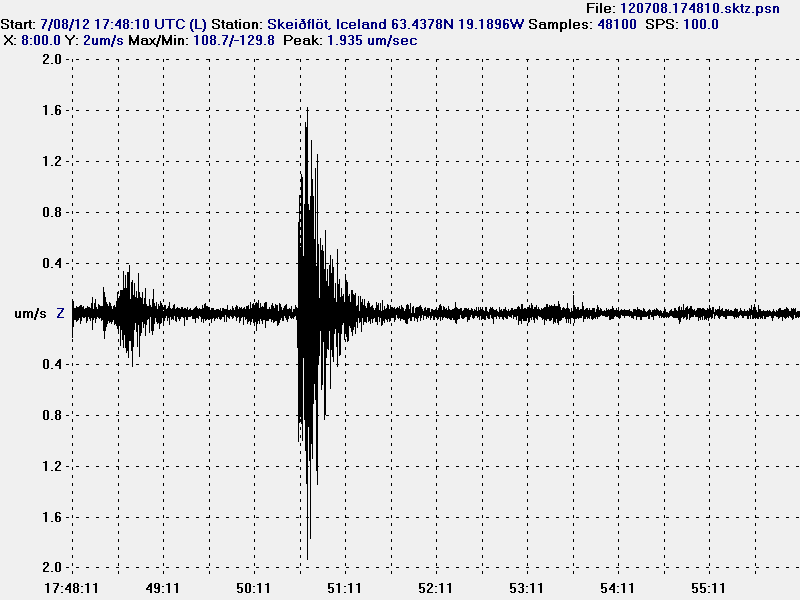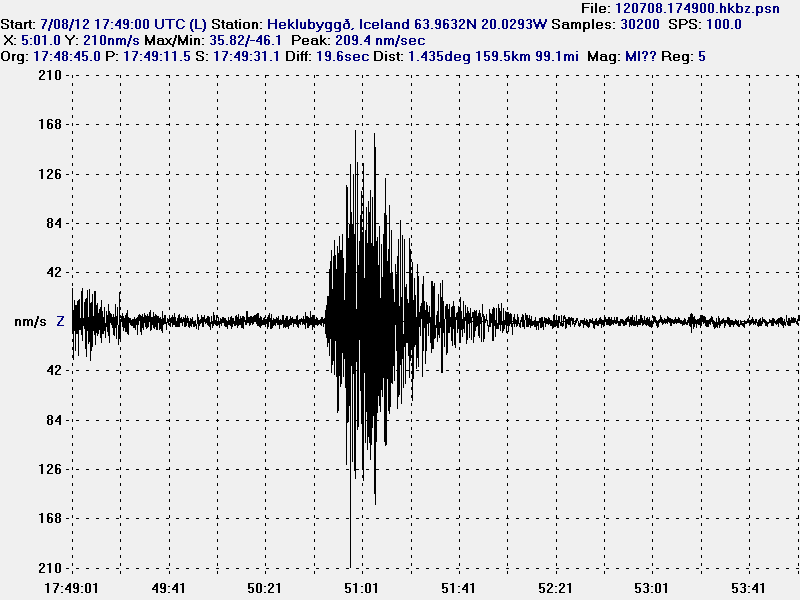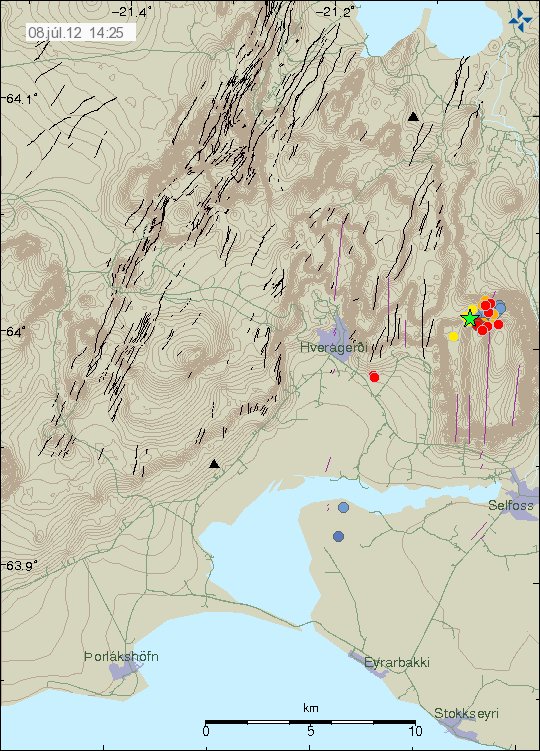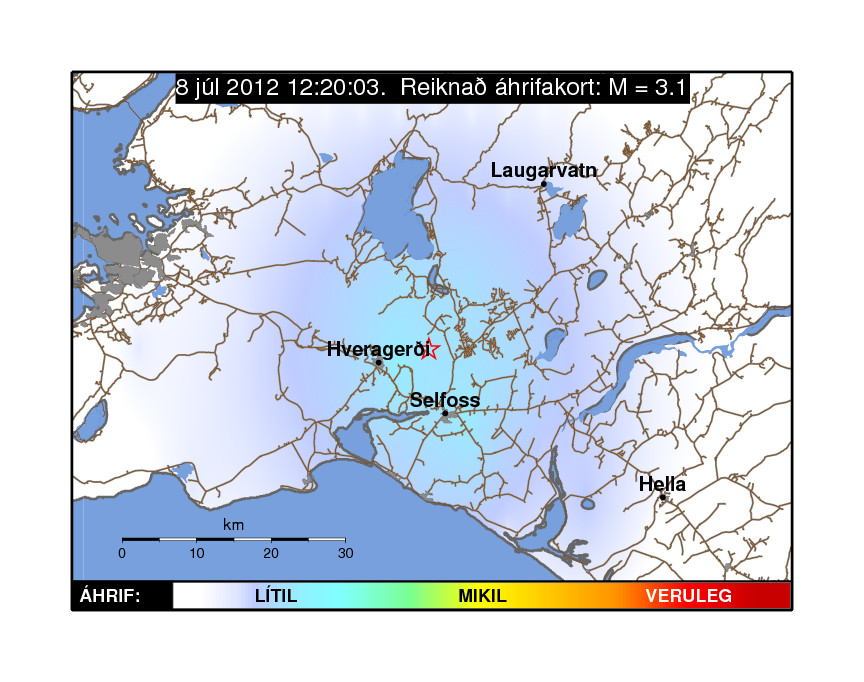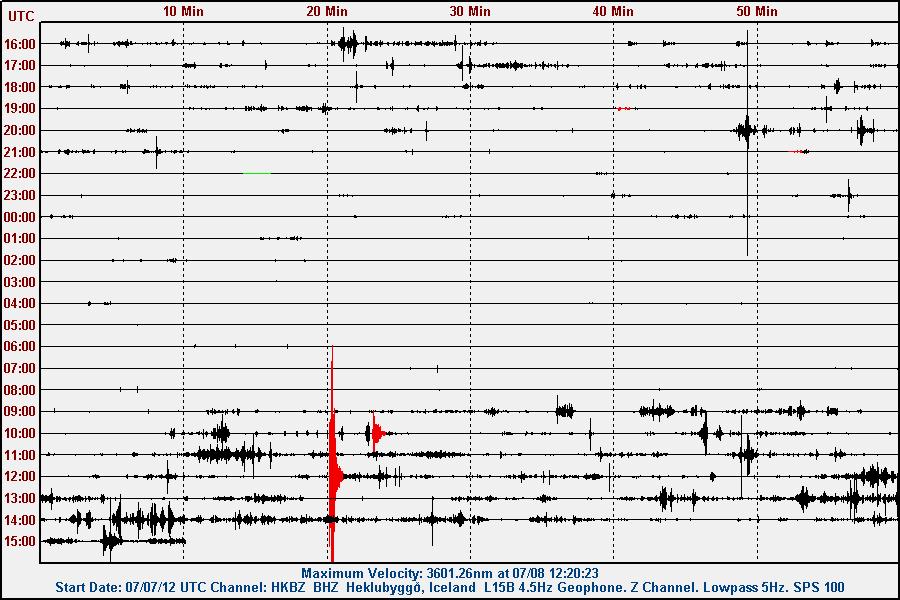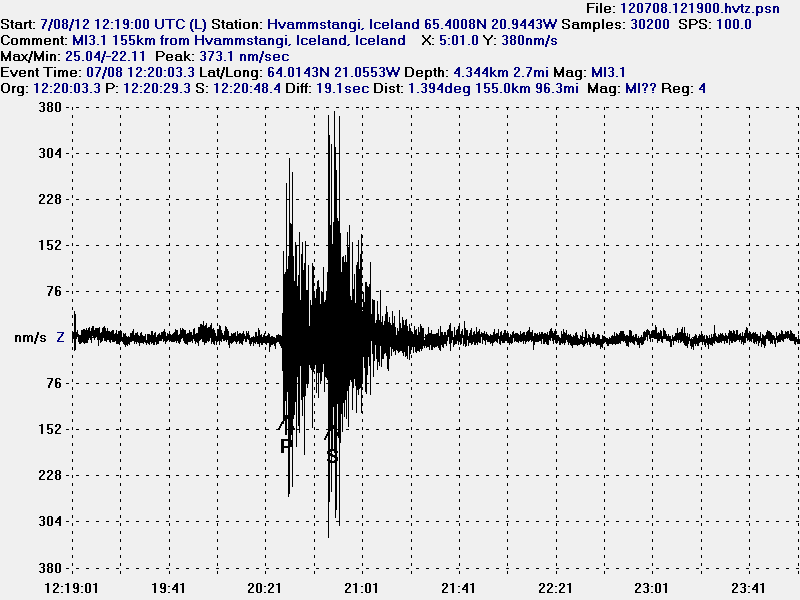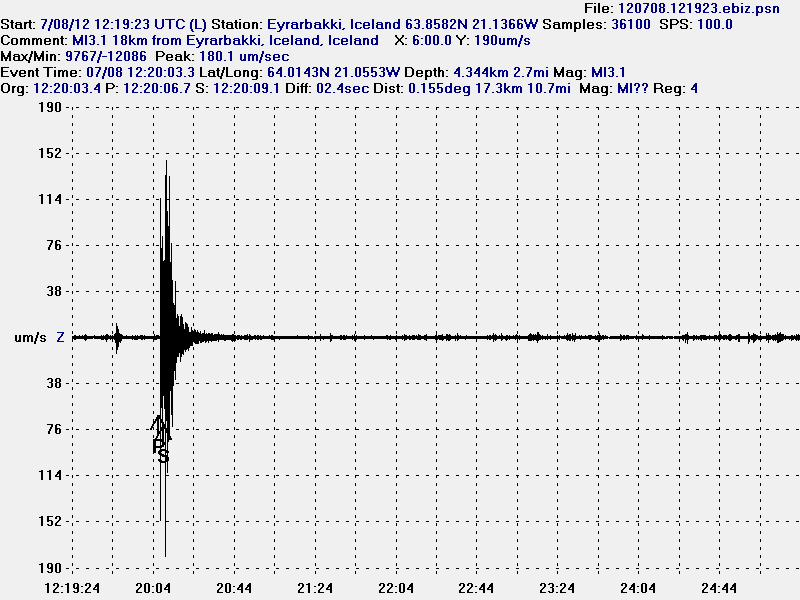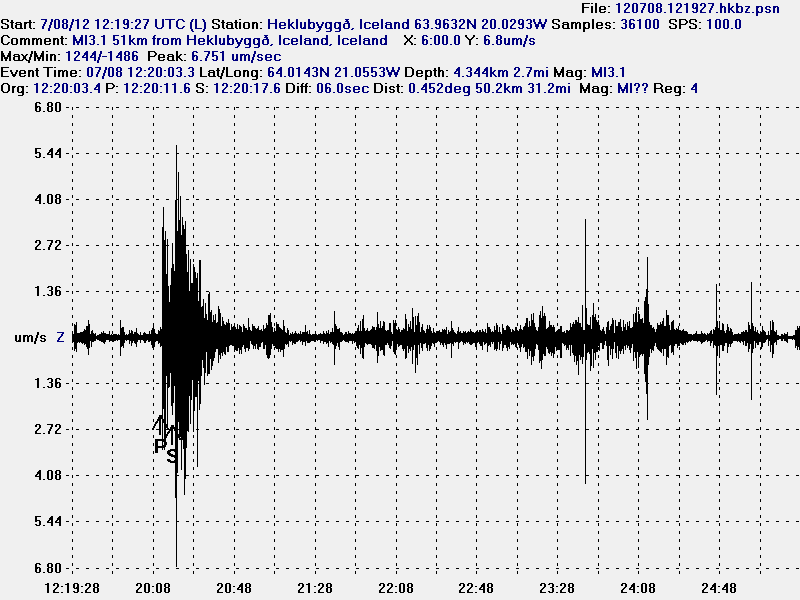Marine Research Institute (of Iceland) has found new mountain off the coast of Iceland. The mountain is in a plateau in the same area. But it rises up from the ocean floor about 450 meters. The area that was mapped had the size of 300 square kilometer. Depth of the ocean at this location is around 1400 meters. This mountain is possibly an old tuff mountain (volcano). But that is not confirmed. According the news, this mountain has youthful look to it and around three craters where spotted on it. The age in this area is around 20 million years. So this might be a extinct volcano from the time period when volcano activity was ongoing in this area. But it most likely has never been above the coast line.
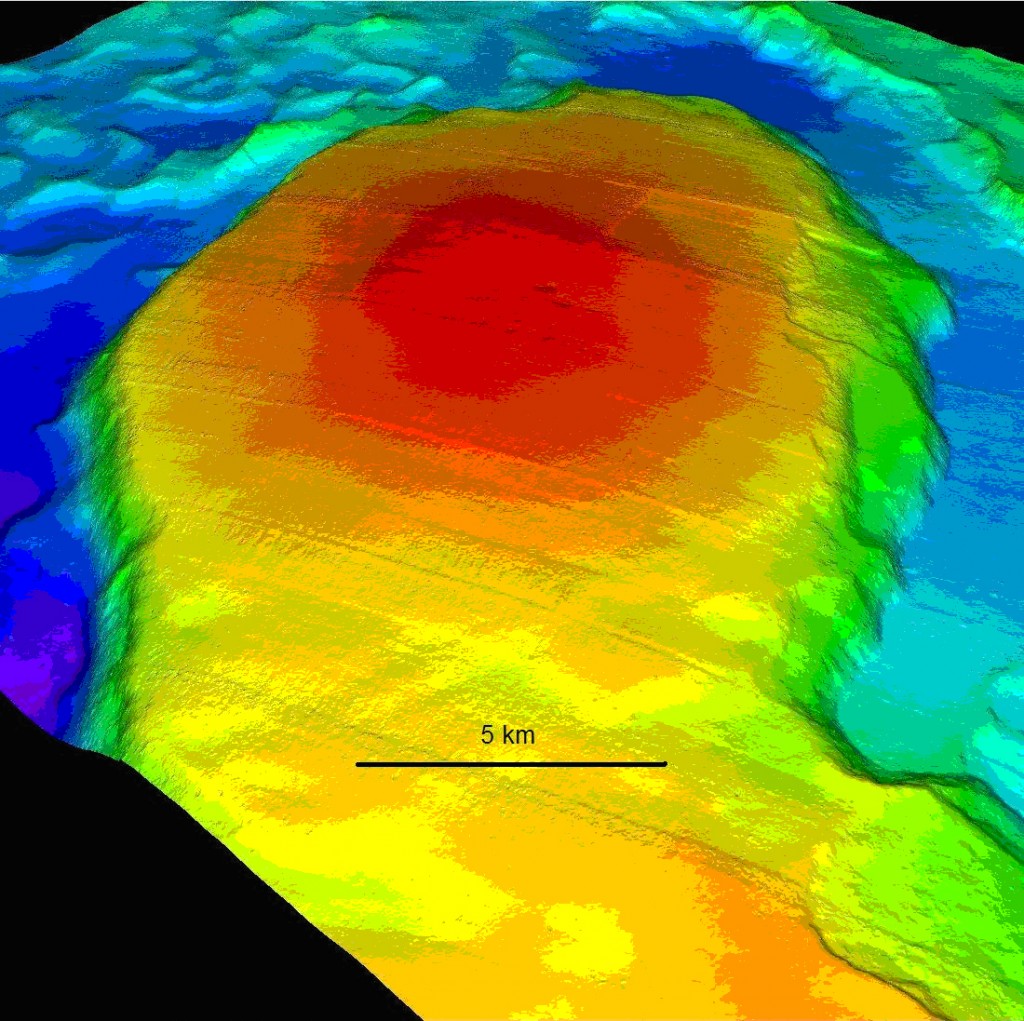
The unnamed mountain on the ocean floor off the west coast of Iceland. Copyright of this image belongs to Marine Research Institute.
They found more then just this mountain in this survey. They also found more mud volcanoes off the coast of Iceland. Some of them are reaching 350 meters off the ocean floor.
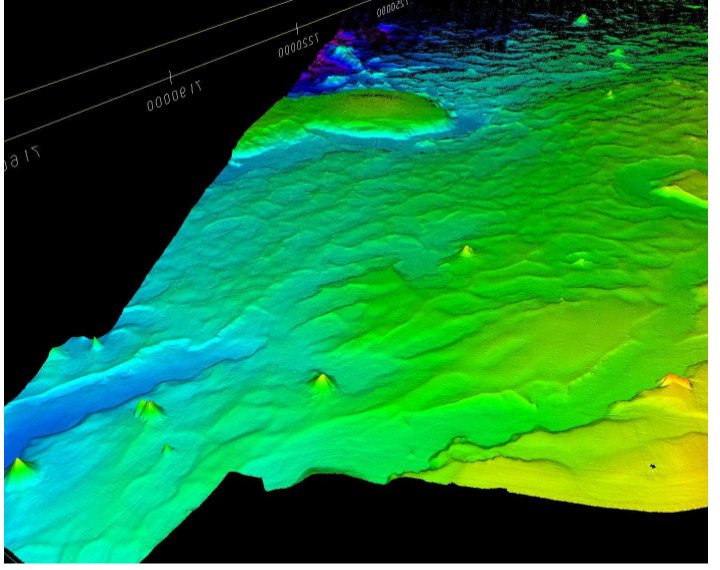
Mud volcanoes appears as spikes in this image. This image has has things four times larger then they actually are. Copyright of this image belongs to Marine Research Institute.
There are many more unknowns off the coast of Iceland. As the ocean floor is largely unexplored today. As are many other parts of the ocean floor around the world.
Icelandic news about this
Stórt og mikið neðansjávarfjall birtist með fjölgeislamælingum djúpt vestur af Íslandi. (hafro.is, Icelandic, pictures)
Hafró: Fundu 450 m hátt neðansjávarfjall vestur af Snæfellsnesi – tífalt stærra en Ingólfsfjall (Pressan.is, Icelandic)
Blog post updated at 06:25 UTC on 02.08.2012. Correct English name for Hafrannsóknarstofnun added.


